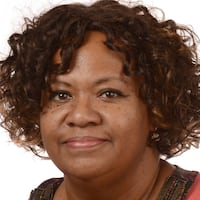Grandparents of children now in school may remember the space race that began in the mid-1950s. Competing with Russia to be the first with a man on the moon, the United States pushed for more math, science and technology courses. While there may be no comparable quest to lure the best technological minds nowadays, just about every country, state and city realizes that its future depends on how well it integrates computer technology.
To help metro Atlanta in that endeavor, the Honeywell company partnered with Georgia Tech’s Center for Education Integrating Science, Mathematics, and Computing (CEISMC) to host the 2020 Honeywell STEM Challenge Showcase. The competition is for students, but a goal is to increase the number of certified computer science teachers in the state.
Students were tasked with solving a problem or disaster, man-made or natural. One of Jennifer Killian’s teams from Trickum Middle School won first place for a project designed to defend the Global Seed Vault near the arctic by monitoring for meltwater and alerting people to its presence. Called Micro:Bit Seed Vault Defender, it won the students a trophy and Micro:Bits controllers for their class.
“We wanted to make sure it would last forever,” said 12-year-old Damian Moss. “With global warming there are hurricanes and tsunamis that are raising the sea level much farther inland.”
Nodding their heads, his schoolmates agreed that they didn’t take their task lightly.
The STEM Challenge is a part of Tech’s STEM Teacher Leadership Program sponsored by Honeywell to offer demonstrate advanced teaching techniques to metro Atlanta middle and high school teachers. Teachers participated in intensive four-week summer professional development focused on computer science principles and were paired with a mentor from Honeywell who provided guidance and support throughout the school year.
“Having more teachers qualified to teach children this next level of technology is a win for everyone whether they’re working for Honeywell or some other big STEM company,” said Marti Skold-Jordan, senior manager of Global Communications at Honeywell.
Select alumni teachers are invited back for additional professional development aimed at preparing them to become computer science certified. They serve as mentor teachers for future STLP teams.
Killian, a certified computer science teacher at Trickum, brought several teams of STEM students to the competition from Trickum as well as Duluth Middle. She was part of the original class last year. This is Honeywell’s second year of the event, but the first at Georgia Tech, which has signed on to fund it two more years.
“I’m interested in animation, but I’d use it to give people a sense of things that don’t yet exist,” said 14-year-old Munira Ali. “At first (coding and other computer science activities) were a little scary, but once we got used to it, we realized how much we can do.”
That kind of enthusiasm comes from confident, qualified instructors setting students on a path to innovation, said Bryan Cox, computer science specialist at the Georgia Department of Education.
He said there are 370 credentialed computer science teachers compared to more than 1,000 middle schools in the state.
Senate Bill 108, which passed in May, calls for every public middle school to offer computer science classes by 2022 and every high school by 2025.
“We have to stimulate all touch points — students, teachers, school districts, private industry and higher education,” he said. “To build efficacy, there’s a lot of integration involved — computational thinking, digital literacies, pattern recognition …”
And the end product is engaged students.
“From a teaching perspective, I want to make sure the connections for them are personal,” Killian said. “The projects are important.”
“It’s more exciting to have a real world challenge,” said 13-year-old Josie Chang. “I’m a kid and I can do something that can make a difference in the world.”
STEM Challenge Showcase Awards
Special Awards
Impact Award - for a project demonstrating an exceptional and realistic impact for social good in one’s home, school, or community
Impact (Junior Division)
Team: Baby Bath Safety Tub
School: Mundy’s Mill Middle
Impact (Senior Division)
Team: Street Smart Walk Home
School: Benjamin Mays High
Innovation Award - for a project demonstrating a novel or exceptionally creative solution
Innovation (Junior Division)
Team: Survival Food Dispenser
School: Smitha Middle
Innovation (Senior Division)
Team: F.A.S.T. (Fire and Safety Technology)
School: Chamblee Charter High
Placement Awards
3rd Place (Junior Division)
Team: Kidnapper Book Bag
School: Hollis Innovation Academy
3rd Place (Senior Division)
Team: Hearing Impaired Home System
School: Lovejoy High
2nd Place (Junior Division)
Team: Kid-Alert
School: Duluth Middle
2nd Place (Senior Division)
Team: Flood Protection
School: Chamblee Charter High
1st place winners will receive Micro:bits.
1st Place (Junior Division)
Team: Micro:Bit Seed Vault Defender
School: Trickum Middle
1st Place (Senior Division)
Team: Tackling Obesity with Micro:Bits
School: BEST Academy
Source:
About the Author
Keep Reading
The Latest
Featured




